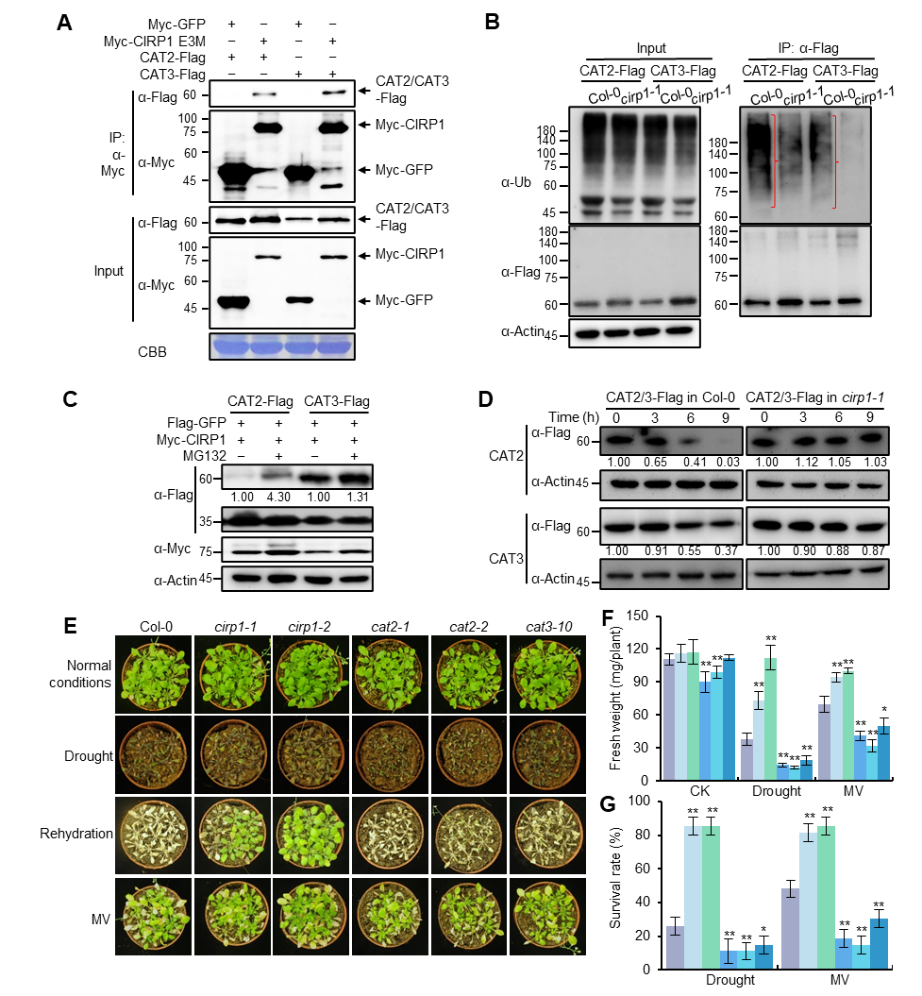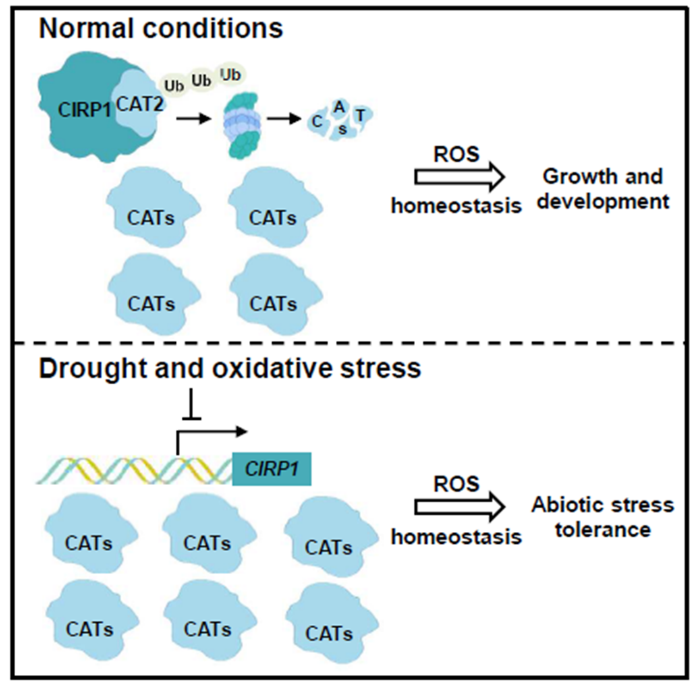A novel E3 ubiquitination ligase CIRP1 targets CATALASES to maintain ROS homeostasis in Arabidopsis
Due to the immobility of plants, stress response and tolerance are critical for their survival when subjected to environmental stress such as drought, salt, as well as biotic stress. ROS acts as the signal molecules upstream of stress response and works with various phytohormone such as ABA, JA, and SAsignaling pathway. Stress-induced ROS burst causes oxidative damage to biomolecules (including proteins, RNA and DNA molecules, and membranes), eventually destroying the plant cell. H2O2, the most stable ROS with a relatively long half-life than the other ROS, is a kind of toxic cellular metabolite from various biological processes. However, H2O2 also serves as an endogenous signal that is involved in the regulation of plant growth and development. H2O2 homeostasis must be tightly monitored and regulated.
Among the various antioxidant enzymes, catalases (CATs) function as the major scavengers of H2O2 by directly degrading H2O2 to H2O and O2. However, This understanding of CAT turnovers, which are crucial for elucidating the mechanisms of ROS homeostasis, remains limited.
Recently, a study led by Dr. DENG Shulin in the South China Botanical Garden (SCBG) of the Chinese Academy of Sciences (CAS), was published in Journal of Integrative Plant Biology. This work found that CIRP1 negatively regulates drought and oxidative stress tolerance by destabilizing CAT2 and CAT3 in Arabidopsis.

Figure 1. CIRP1 degrades CATs to negatively regulate Arabidopsis stress tolerance.(Image by DENG et al)
According to a yeast-two-hybrid screening, a RING and vWA domain containing protein, CIRP1 (CAT2 Interacting RING Protein 1), was found to interact with CAT2. CIRP1 harbored E3 ubiquitination activity and accelerated the degradation of CAT2 and CAT3 by direct interaction and ubiquitination. Genetic analysis revealed that CIRP1 acts upstream of CAT2 and CAT3 to negatively regulate drought and oxidative stress tolerance. These results demonstrated that the CIRP1-CAT2/CAT3 module plays a vital role in alleviating ROS levels and balancing growth and stress responses in Arabidopsis.

Figure 2.Working model of CIRP1 in maintaining ROS hemostasis through CATs.(Image by DENG et al)
This work was supported by grants from the National Natural Science Foundation of China and the Natural Science Foundation of Guangdong Province. The link to this article: https://doi.org/10.1111/jipb.13845.
File Download: